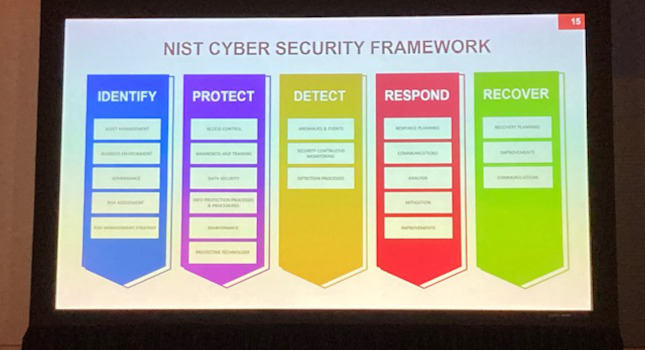Kit-based absolute encoders (position sensors) can make stepper motors a lower-cost option to servo motors for many industrial machinery motion control applications.

Learning Objectives
- Stepper motors can provide closed-loop control with position sensors.
- Absolute encoders provide reliable position capabilities to stepper motors, providing a lower-cost alternative to servo motors for some applications.
- Encoder kits are relatively easy to install on stepper motors, providing rotational motion control.
Low-cost stepper motors are an attractive alternative to high-end servomotors for many motion control applications in industrial machines. This has been made possible by a new generation of kit encoders (modular position sensors) that can be added to standard motors, providing accurate and reliable closed-loop position control. As well as providing absolute position measurements, these new sensors offer self-powered, maintenance-free multi-turn functionality.
Stepper motors for position control
Stepper motors are simple brushless dc motors used in a wide range of applications, such as small tools, appliances, printers and vehicles. In the industrial arena, they have been used for positioning tasks in machines or high-speed pick-and-place processes.
Compared to servomotors, which are designed for precision motion control, stepper motors are simpler devices. They also are much less expensive, averaging one tenth the cost of servomotors. With stepper motors, control is achieved through incremental rotation of the electromagnetic field generated by the motor’s stator coils. With each controller pulse, the rotor moves forward by a clearly defined step or angular offset. Up to 200 steps per revolution are common, although motors with 400 or more steps also are available. A resolution of less than 0.1 degrees can be achieved by micro-step operation. The step accuracy is usually in the range of a few percent.
Closing the control loop with a position sensor
Basic stepper motors operate as part of an open-loop control system. If a motor fails to move as requested (due to unexpected mechanical resistance), there will be a discrepancy between what the control system “thinks” is the position of a mechanical component and the actual position, resulting in a loss of accuracy. This shortcoming can be overcome by adding an encoder (rotation sensor) that can confirm if each step motion has been completed.
Absolute encoders for position control
Incremental encoders provide simple pulse signals with each completed rotation step and are ideal for speed control. However, absolute encoders can be a better choice for position control tasks.
With incremental encoders, if the control system needs to determine the absolute rotary position of the motor’s shaft, it must keep an accurate count of the number of steps that have been completed. If this count is lost or corrupted – such as from to a power interruption – position knowledge is lost. In this case, it is often necessary to “re-home” the system by returning the machinery to a known starting position and re-starting the step count.
By contrast, absolute encoders measure rotation angles directly and can report complete position data, including the number of complete rotations. This information can be retrieved by the controller at any time so production can resume immediately with minimal loss of time and materials.
Kit encoders with magnet absolute encoders
Magnetic absolute encoders for stepper motors are available as “kit” or modular devices, designed to be integrated into a motor housing, measuring the rotary position directly from the drive shaft. The core element of these devices is a magnetic measurement module that is compact (as small as 22 mm diameter) and resistant to dust, moisture, and shock/vibration loading. Absolute magnetic encoders can deliver accuracies as high as ± 0.1°, over an operating temperature range of -40 to 105°C. Multi-turn variants can be useful when a motor is connected to a screw shaft, cable drum or gear reduction system. The multi-turn rotation counter is self-powered, using an efficient, maintenance-free energy harvesting system based on the Wiegand effect, where a magnetic field in specially designed wire flips when exposed to a magnet, creating voltage. This eliminates the need for backup batteries.
Kit packages are available with the same mounting form factor as popular incremental encoders for NEMA-standard stepper motors, making these encoders convenient drop-in replacements for less advanced incremental encoders.
Since kit encoders do not have the housings, shafts, bearings or seals required for self-contained encoders, manufacturers can deliver the core measurement module at relatively low prices. As a result, stepper motor-encoder combinations are often less expensive than comparable servomotors. Cost efficiency also extends to the steps required to install magnetic kit encoders in a stepper motor’s housing. The magnetic measurement technology is relatively tolerant to minor misalignment between the rotating element (a small permanent magnet fastened to the motor shaft) and the components bolted to the housing. This simplifies assembly procedures and reduces manufacturing costs. A self-calibrating feature can compensate for minor alignment errors without loss of measurement accuracy.
Position sensors inside stepper motors
Stepper motors with built-in position sensors are a useful alternative option for positioning tasks in manufacturing equipment, packaging machinery, robots and other applications where a reliable, cost-efficient drive mechanism is needed.
Jim Stevens is product specialist, Posital Inc. Edited by Mark T. Hoske, content manager, Control Engineering, CFE Media, [email protected].
MORE ANSWERS
KEYWORDS: Position control, encoders, motion control
CONSIDER THIS
What applications could benefit from lower cost rotational position control?
ONLINE EXTRA
Posital is part of the Fraba Group of companies. Posital Fraba explains more about energy harvesting position sensors that use the Wiegand effect.



